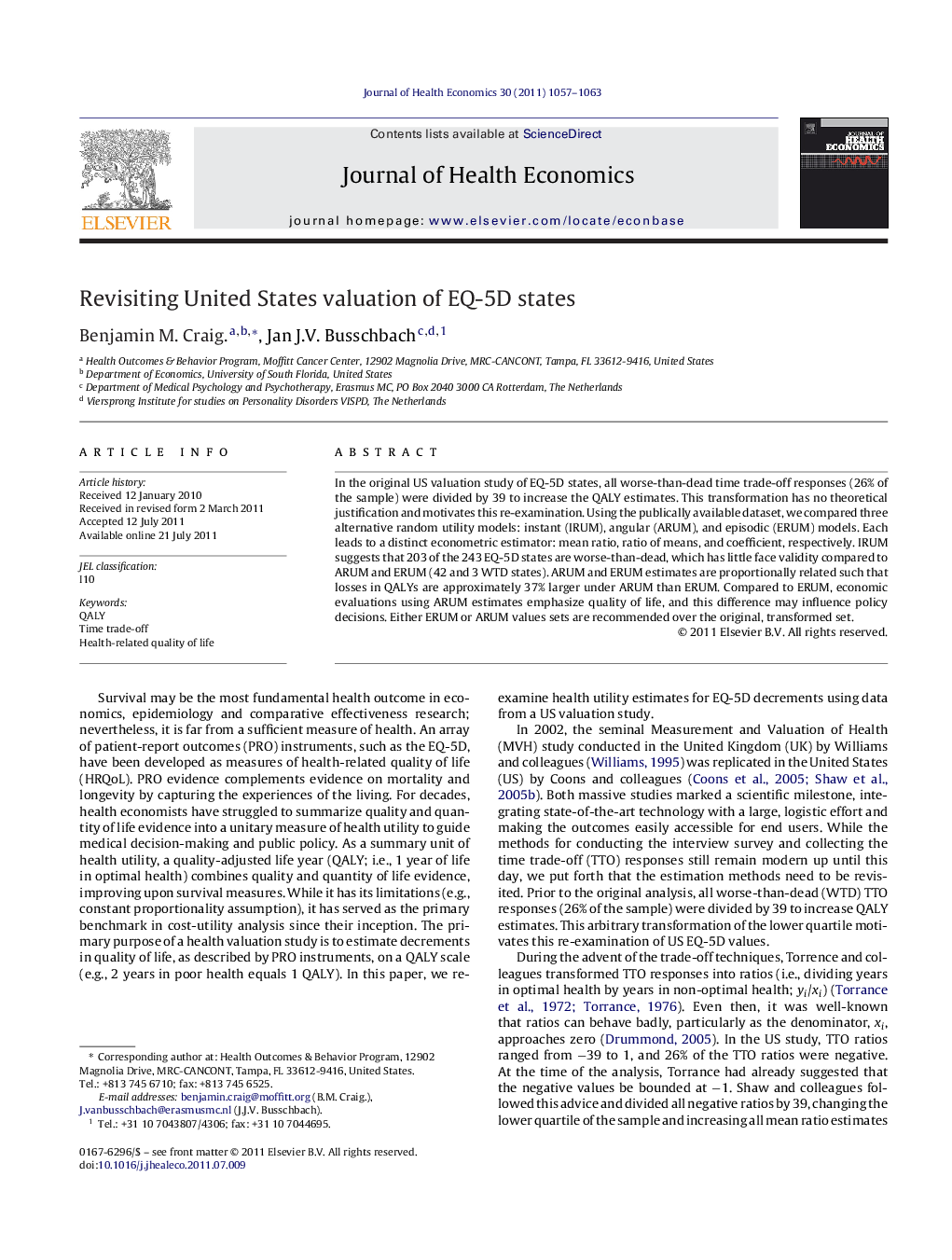| Article ID | Journal | Published Year | Pages | File Type |
|---|---|---|---|---|
| 10476460 | Journal of Health Economics | 2011 | 7 Pages |
Abstract
In the original US valuation study of EQ-5D states, all worse-than-dead time trade-off responses (26% of the sample) were divided by 39 to increase the QALY estimates. This transformation has no theoretical justification and motivates this re-examination. Using the publically available dataset, we compared three alternative random utility models: instant (IRUM), angular (ARUM), and episodic (ERUM) models. Each leads to a distinct econometric estimator: mean ratio, ratio of means, and coefficient, respectively. IRUM suggests that 203 of the 243 EQ-5D states are worse-than-dead, which has little face validity compared to ARUM and ERUM (42 and 3 WTD states). ARUM and ERUM estimates are proportionally related such that losses in QALYs are approximately 37% larger under ARUM than ERUM. Compared to ERUM, economic evaluations using ARUM estimates emphasize quality of life, and this difference may influence policy decisions. Either ERUM or ARUM values sets are recommended over the original, transformed set.
Related Topics
Health Sciences
Medicine and Dentistry
Public Health and Health Policy
Authors
Benjamin M. Craig., Jan J.V. Busschbach,
